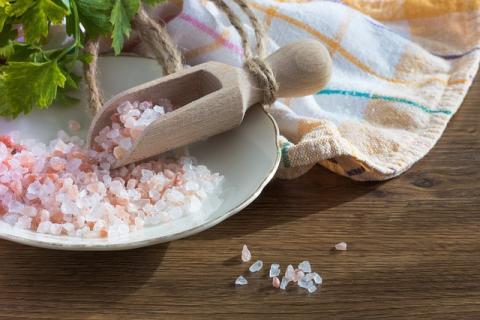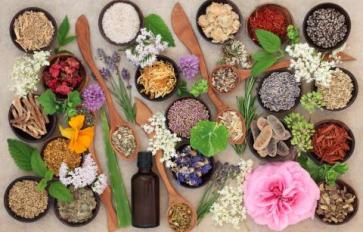
As a society, we are constantly bombarded by conflicting information as to what is “good for us” to eat—and what is not.
For example, a pervasive myth exists that “salt is bad.” While an excess of salt in the diet can be harmful, and in some cases a person may need to monitor salt intake based on certain health conditions—it is important that we don’t throw out salt altogether. Salt is actually an incredibly important element of our diet that we require to function, feel good and thrive on a daily basis.
The key here, of course, is moderation.
And, while many people know that balancing the proper amount of salt in the diet is important to health, what is lesser known is that what type of salt you eat is just as important as how much.
Growing up, I used regular “table salt” or iodized salt, as most people do. As far as I knew, salt was simply something you used to make your food taste better or have a stronger flavor, but other than that, I did not know much about its nutritional value. As it turns out, salt is essential for maintaining the healthy functioning of the body’s cells, nerve conduction, and digestion, as well as the absorption of nutrients and the elimination of waste products.
About eight years ago, I began consulting multiple Nutritionists and Naturopaths and learned about the best salts to consume for my health and overall wellbeing. Pink Himalayan salt and Celtic sea salt are the only two types of salt that these health practitioners unanimously recommended. As a result, these are also the only two salts that I eat anymore. (Well, this is true at least when I am the one doing the cooking. Sometimes when dining out or as a guest in someone’s home, exceptions need to be made. That said, the less processed foods you eat, the better, and you may even find yourself carrying your salt around with you if you become dedicated enough!).
Why Pink Himalayan Salt?
Pink Himalayan salt contains over 84 minerals and trace elements, including calcium, magnesium, potassium, copper and iron. And, high-quality pink Himalayan salt is one of the purest salts you can find—while table salt is very heavily processed. The processing that table salt or iodized salt undergoes eliminates the majority of its minerals by the time it reaches your dinner table, thus leaving it with little-to-no nutritional value.
Himalayan salt, on the other hand, has major health benefits, the top four of which include improving respiratory problems, balancing the body’s pH (this is extremely important for immune health and overall well-being), improving digestion and helping with sleep (due to the high mineral content). These are just the most obvious benefits—there are many, many others.
Not to mention—this salt is pink and beautiful.
Why Celtic Sea Salt?
Celtic sea salt is overall similar to Himalayan salt in terms of its positive health properties and mineral content. The biggest difference between the two salts is mainly that they come from two different locations. Celtic sea salt comes from Brittany, France, and has a different color, texture and mineral makeup from Himalayan salt. Both Himalayan salt and Celtic sea salt are high in minerals, though some sources say that Himalayan salt has a moderately higher mineral content.
When you look at Celtic sea salt, you can see its natural and unprocessed properties. It looks like it came from the ocean, and each crystal is unique, rough and real.
Why not “Table Salt”?
Many table salts are highly processed, and go through an intensive bleaching process. The heavily processed nature of these table salts eliminates the majority of the minerals that they originally contained. With most table salts, you’re only left with one mineral—sodium—and some added iodine. Sometimes—and most often—there are chemical additives put into common table salt in order to prevent clumping, as well as aluminum derivatives, which are all hazardous to health. Ideally, when we are adding things to our food, the idea is to improve health, not compromise or reduce it.
Pink Himalayan and Celtic sea salt are easy to find nowadays in health food stores, and more and more often they can be found at “everyday” supermarkets. The products on the shelves are finally starting to catch up to the research on the best salts for our health.
So, there you have it—a basic guide to salt. Just give it a try! I think you will find that you’ll like it. Not only are these salts good for you—they are pretty, too!








